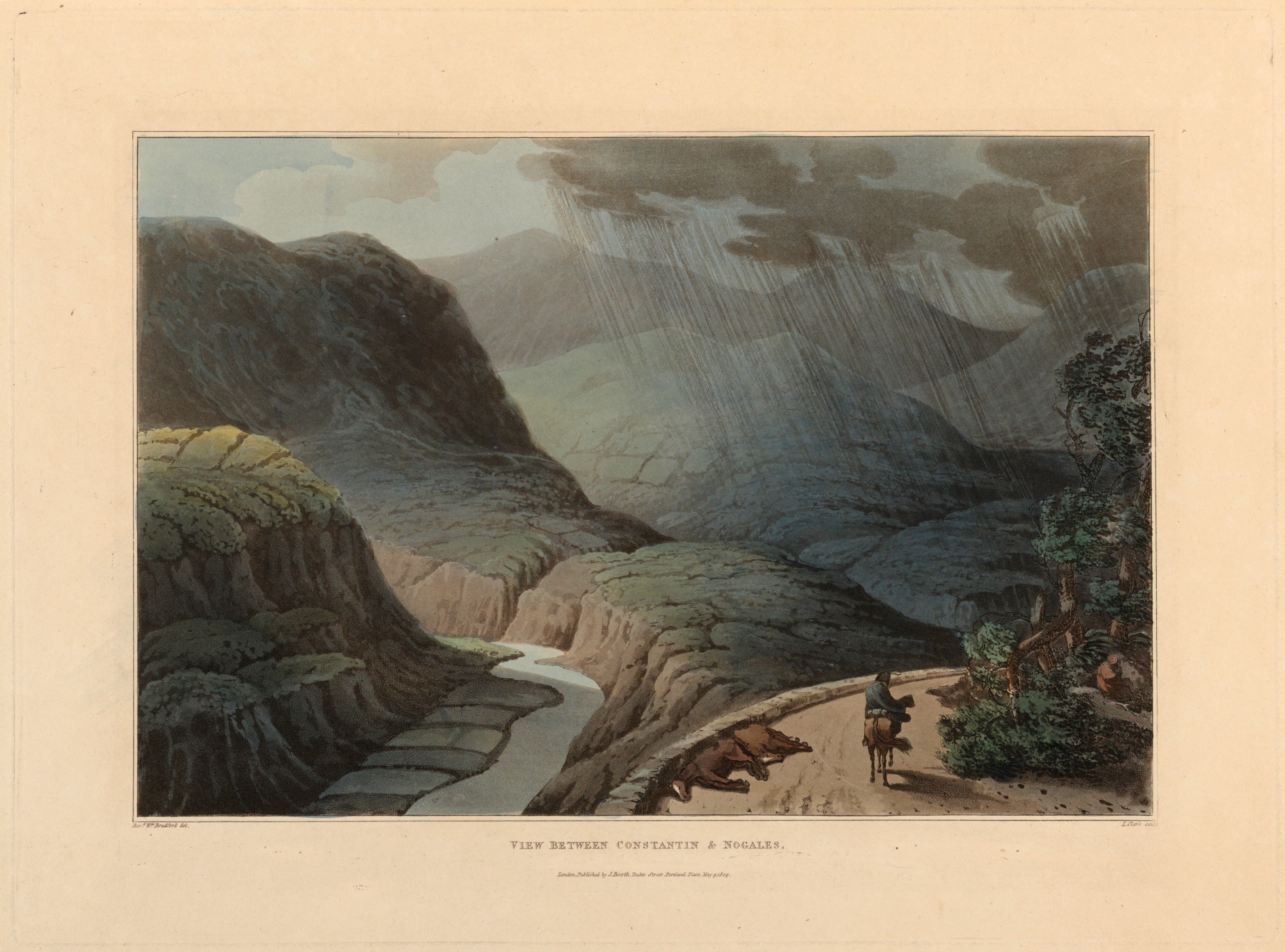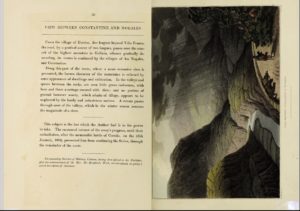The Reverend William Bradford traveled with his sketchbook. Not much else is known about Bradford, who served as a British Army chaplain in Spain and Portugal during the Peninsular War (1807 – 1814). In that conflict, British troops joined Spanish forces in their resistance to Napoleon. As Reverend Bradford accompanied his fellow British soldiers across the Iberian Peninsula, he carefully recorded their journey. Soon after his return to England in 1809, his recollections were published in an illustrated volume.
Sketches of the Country, Character, and Costume, in Portugal and Spain, Made during the Campaign, and on the Route of the British Army, in 1808 and 1809 featured stunning hand-colored aquatints, printed and colored by the Scottish artist John Heaviside Clark (ca.1770 – 1836) after Bradford’s designs.[1] The print seen above is one such illustration, isolated from the context of the book. There, it would have been paired, like the other aquatints, with a brief text description provided by Bradford, giving an account of the landscape and its occupants.[2] Characterized by a grand and gentle beauty, the Iberian scenes make only subtle reference to the ravages of the Napoleonic Wars. As such, they stand in strong contrast to contemporaneous images produced by the Spanish artist Francisco de Goya y Lucientes; it was in response to the same conflict that Goya developed his series of nightmarish prints conjuring The Disasters of War.
Identified as a “View between Constantin and Nogales,” the print above emerged from the very last of Bradford’s drawings made in Portugal and Spain. He was unable to produce more because, as his text explains, the British troops passed through this particular area on their way to the devastating Battle of A Coruña (January 16, 1809), after which they were forced to retreat. The British Army subsequently embarked in defeat for England. And so Reverend Bradford drew no more Iberian sketches.
Dr. Julia Siemon is Assistant Curator of Drawings, Prints & Graphic Design at Cooper Hewitt, Smithsonian Design Museum
[1] Published by J. Booth, Duke Street, Portland Place. Bradford’s Sketches of …Portugal and Spain proved immensely popular, and the first edition was soon followed by expanded versions. One of these can be viewed online, digitized by archive.org.
[2] The text that accompanied the “View of Constantine and Nogales” is as follows: “From the village of Herrias, five leagues beyond Villa Franca, the road, by a gradual ascent of two leaves, passes over the summit of the highest mountain in Gallicia, when gradually descending, its course is continued by the villages of los Nogales, and Constantine. Along this part of this part of the route, where a more extensive view is presented, the barren character of the mountains is relieved by some appearance of dwellings and cultivation. In the valleys and spaces between the rocks, are seen little green inclosures, with here and there a cottage covered with slate; and no portion of ground however scanty, which admits of tillage, appears to be neglected by the hardy and industrious natives. A stream passes through most of the valleys, which in the winter season assumes the magnitude of a river.”

